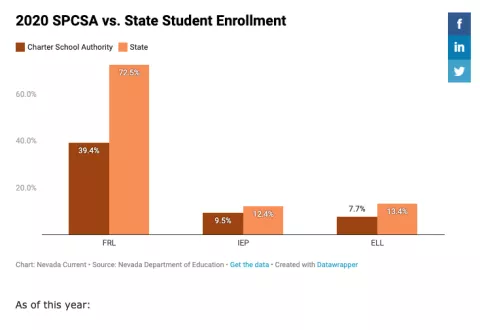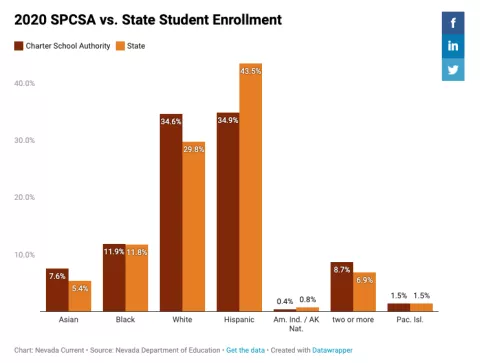This morning, we thought it may be helpful for the committee to provide another perspective on Nevada charter schools. During last session, NSEA pushed for greater accountability for charter schools. While our proposal to cap charter school expansion was not successful, the legislature did pass a 5-year “Growth Management Plan” for charters.
Interestingly enough, while the Charter School Authority was developing this “Growth Management Plan”, they approved nearly 5000 new charter slots.
While Ms. Feiden is correct to point to some improvement since last session, including actually conducting site visits by the State Public Charter School Authority (SPCSA), let’s be honest with each other—the Charter School Authority is only now clearing a relatively low bar of accountability.

While it is great the Charter Authority has begun to address the baked-in biases against disadvantaged students, when looking at overall charter student populations, charter schools serve proportionally fewer at-risk students, English learners, and students with disabilities. Even with progress on more diversity in new charter seats, there is no path for charters to achieve parity in the foreseeable future.
And during the pandemic, many charter schools gamed the system by triple-dipping— taking state funds, CARES Act funds, and PPP funds, all while playing by their own set of rules.
Meanwhile, the Charter Authority has exhibited little effort to slow the growth of charters. Until charter schools serve an equivalent percentage of at-risk students, English learners, and student with disabilities, and until charters are held to the same standards as our neighborhood public schools, they are a force against education equity and a drain on our system of neighborhood public schools.

